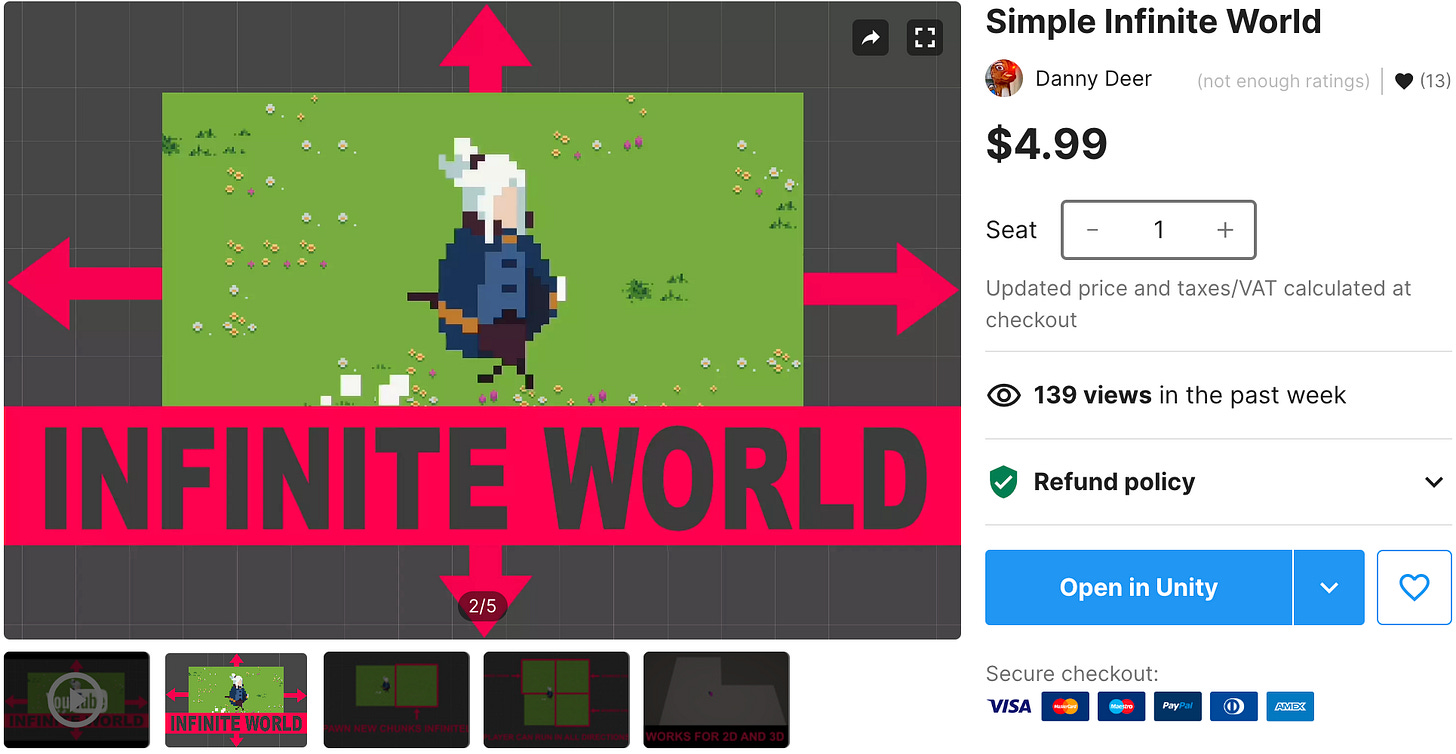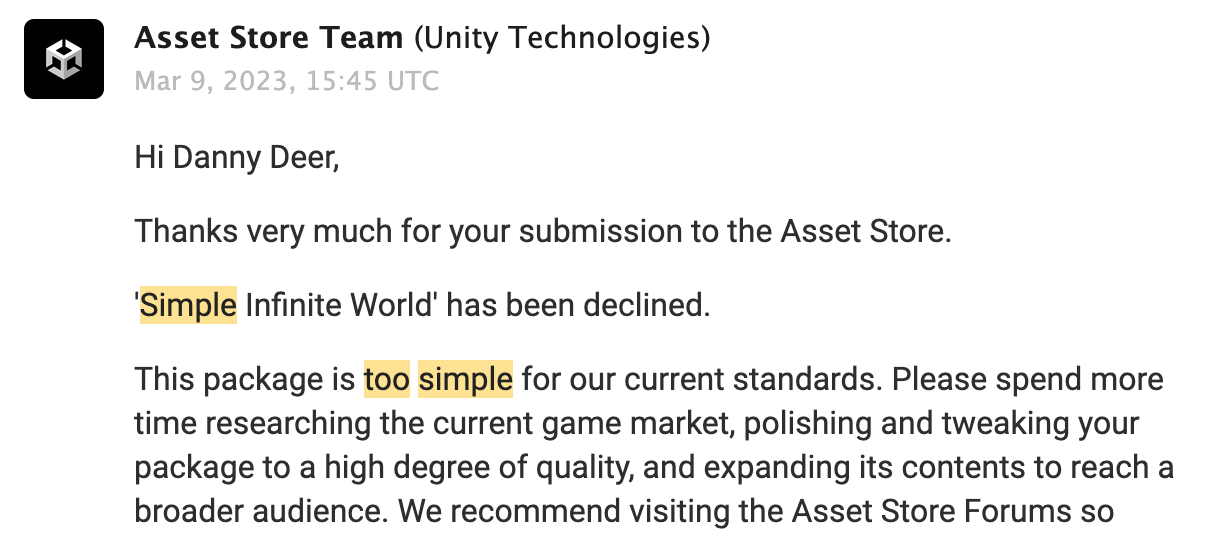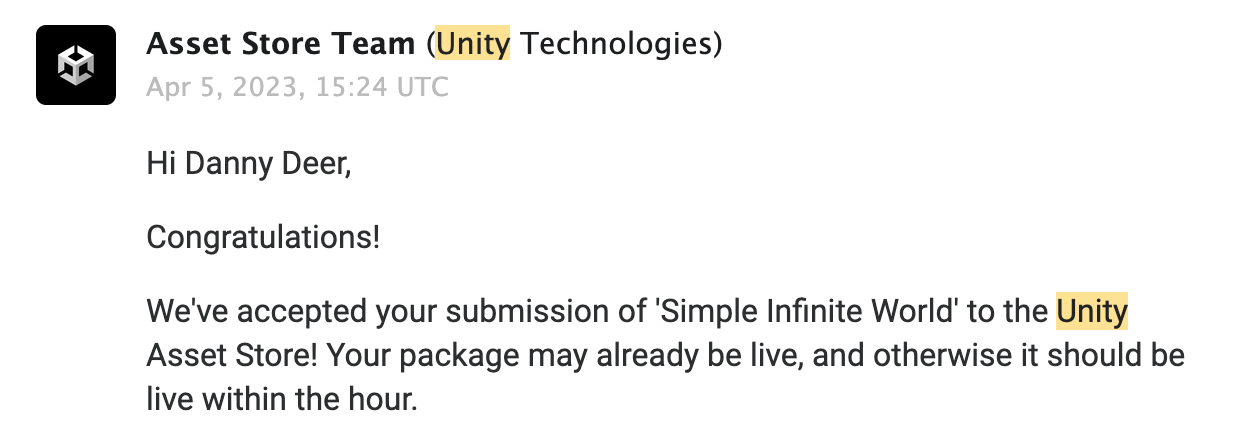The Power of Marketing in the Unity Asset Store
A tale of rejection, insight, and success 🚀
A few weeks ago, I had an epiphany: why not separate the technical aspect of my game (the endless world) and sell it as a standalone asset on the Unity Asset Store? Excited, I extracted the code to a new folder, decoupled it from the rest of the codebase, and recorded a video tutorial on how to use it. All the hard work done - I thought - now I just need to post it on the Asset Store! I quickly registered a Unity Publisher account, called the asset “Simple Infinite World” and wrote a few sentences describing what it does. After all, the asset's purpose is straightforward: to create endless worlds that loop in all directions. That’s exactly what it does and that’s exactly what I wrote - as it should be… right?
After waiting seven grueling weeks for the Asset Store review I received an email from Unity, and my heart raced with anticipation - my asset will finally be in the store! Except…
Ehh, I guess it makes sense. The asset is only a couple hundred lines of code and it’s not particularly complex. I tried to let go, but I couldn't shake the nagging feeling that something was wrong. I’ve watched enough devlogs to know for a fact that there are people that struggle with creating infinite worlds in Unity. And I had seen simpler assets than mine flourish on the Asset Store. So why was mine rejected?
A few weeks later I was browsing through the Asset Store and I realized that the answer was staring me right in the face: every asset, even the most basic one, had a super long, over-the-top description. It was almost comical in some cases. I had always assumed that asset creators were just inflating the importance of their assets to boost sales. But… what if it’s not their choice? What if the Unity Asset Store actually requires these extensive descriptions, even if a shorter, simpler one would suffice?
I was determined to test this theory.
First thing I did was to add the Origin Shift feature to my asset. This feature addresses the imprecision in Unity's physics simulation when a player moves too far from point (0,0) by relocating the player back to that point and adjusting all objects accordingly. To be fair, this addition does increase the complexity of my asset somewhat, so it’s not just a description change, but I intended to add this feature at some point anyways, so why not now?
Next, I sought advice on how to craft an enticing description for my asset. With no marketing-savvy friends to consult, I turned to the all-knowing ChatGPT-4. I described the asset and the whole situation and asked it to create a new, more marketable description. I resubmitted the asset and…
It actually passed the review! Wow. Just because of a description change (and the Origin Shift feature). I’ve always thought about marketing as something that increases results, but in this case, without effective marketing, there would be NO results.
To be or not to be.
0 vs 1.
This really opened my eyes to the importance of marketing, even in the realm of the Unity Asset Store.
Mind you: the new description is not deceitful, it’s just more… expressive/fluffy. If you're curious, you can check it out here.
I’ll share how much $$$ I made on this asset in about a month!
If you enjoyed this post, you can subscribe to get more like it!




